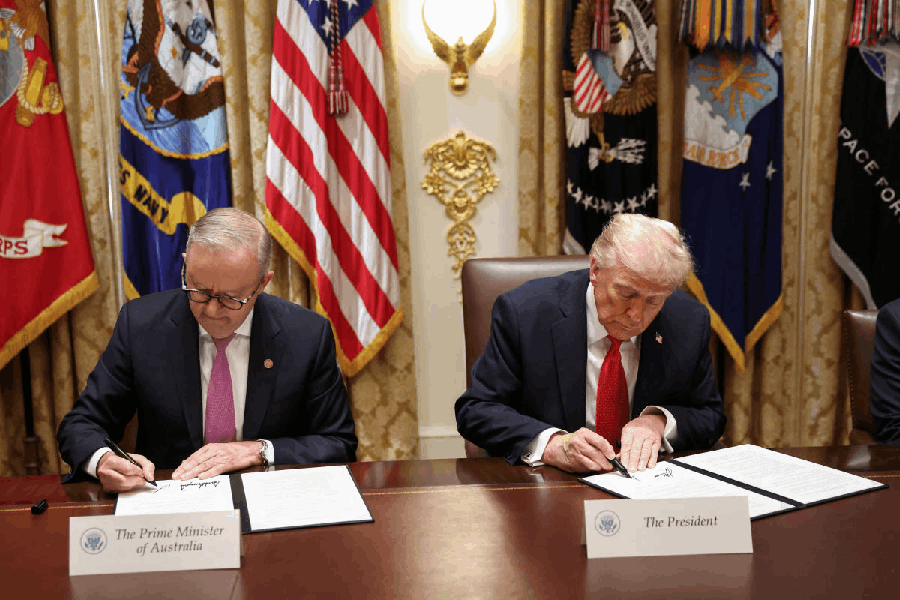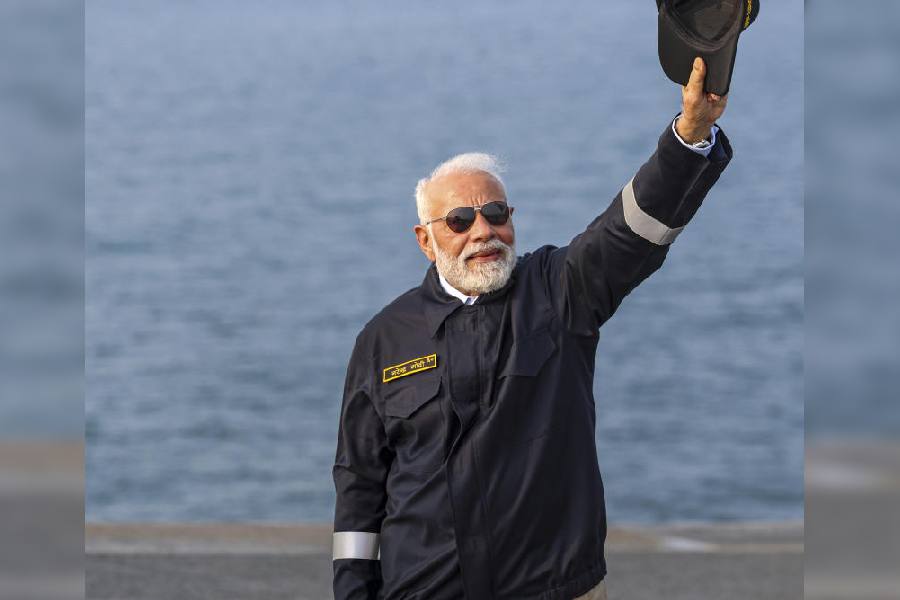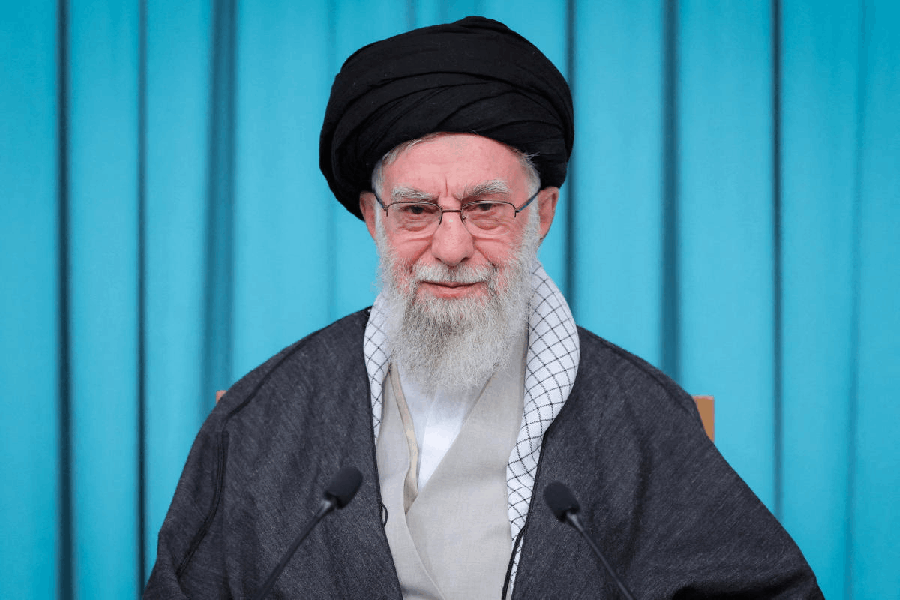 |
| Shillong wears a deserted look during a recent 12-hour bandh called by the Khasi Students Union to protest against the policies of the Meghalaya Board of School Education. Picture by Eastern Projections |
A school board, the only one in Meghalaya, was the subject of much controversy recently. Normally, errors committed by a school board would be viewed with concern by the educational authorities. Weak links in the chain of commands would then be strengthened to avoid further errors. In any other state, it is unlikely that the location of the board at a particular place would be the point of contention and be judged as the weakest link in the chain. But Meghalaya is not any other state. Three major ethnic communities, the Khasis, Jaintias and the A?chiks (Garos), make up the majority population in the state. Schisms among these three tribes are at the root of the unrest.
While Khasis and Jaintias claim to be of common ethnic descent from the Mon Khmer groups of people, the Garos are of Tibeto-Burman origin. There is no similarity in the dialects spoken by the three tribes. Now whereas Khasis can easily understand Synteng, the dialect of the Jaintias and vice versa, both tribes are unable to understand the Garo language of the A?chik people. Nor are Garos able to understand the Khasi or Jaintia dialect. So what binds these three apparently dissimilar groups into one? The only visible sign of commonality between these three ethnic groups is the matrilineal culture, wherein lineage is from the mother?s clan line and property passes through the youngest daughter or the khatduh in the case of Khasi-Jaintias and nohkhrum in the case of Garos.
Emotional bonds
But whether it is possible to unite people on the basis of a common culture with just a single thread of similarity is debatable, because people also need to be emotionally and socially integrated. So, what actually were the points of consensus and compromise which made the then architects of the hill state movement comprising Khasi, Jaintia and Garo leaders ask for a state with the present geographical space? I am afraid that the debates between the early leaders Capt. Williamson Sangma, Grohonsing Marak, B.B. Lyngdoh, D.D. Pugh, H.S. Lyngdoh, S.D.D. Nichols Roy and P.R. Kyndiah in negotiating for a separate state were not recorded for posterity. In typical tribal style, much of what was spoken then was oral and not considered important enough to form the annals of recorded history. This poses serious problems for students of history while seeking to understand the minds of the architects of Meghalaya.
Today, 33 years down the line, when all but two of the key players of the hill state movement have been laid to rest in their earthly graves, the errors of the past haunt the present generation and leave behind a trail of bitterness and deep distrust between the three communities. People are wondering whether the leaders who took important decisions at the time really had a vision and also the wisdom of statesmen. Were the decisions taken only for political expediency? Did those leaders somehow misjudge their people, misread their angst, and therefore, miscalculated their moves? Is the present conundrum a result of those early blunders? Were the seeds of conflict sown at the very inception of Meghalaya?
When Meghalaya was born it was not leaderless or rudderless. There were politician-statesmen whose intellectual command and political acumen were well-knit and equal to the best in the country. At the same time, there was a magnanimity that bonded them together as champions who fought shoulder-to-shoulder for a state of their own.
Divisive tenor
But somewhere along the journey the intentions became blurred. Things began to acquire a divisive tenor. Firstly, the state?s reservation policy was articulated in a manner that classed the Khasis and Jaintias as one ethnic group and the Garos as another. The policy was intrinsically divisive. It was a policy that depended on the magnanimity of one community towards the other. Reservation was worked out in the ratio of 40:40:15:5. Khasis and Jaintias shared 40 per cent of the cake, the Garos got 40 per cent, other backward tribes got 15 per cent while five per cent was kept as open category.
There is no denying that the people of the Garo Hills lag behind the Khasis and Jaintias in educational qualifications. Hence, the two more advanced tribes also have more access to government employment. Problems arise when vacancies allocated for Garos remain unfilled despite the reservation and those are carried forward instead of being filled up by Khasis and Jaintias.
What has become more contentious in recent times is the application of the reservation policy while allotting seats in medical, engineering and other professional colleges. Cut-off marks for Khasi and Jaintia students for entry into medical colleges is as high as 78 or 80 per cent whereas Garo candidates get by with 60 to 65 per cent or less. There have been instances where Garo students have abandoned their seats because they could not cope with the course content. These are facts and are not intended to hurt the sentiments of any individual or community.
Coming to the issue of the Meghalaya Board of School Education, it should have ideally been located in the state capital. This is true of all educational boards in the country. Centrality of the institution and its accessibility from all quarters should be a prime consideration. In the case of Meghalaya, the board is situated in Tura, the district headquarters of West Garo Hills.
Tura is 200 km away from Shillong and approximately 300 km away from Jaintia Hills. Distance apart, from its inception, the board was not cared for by its parents in the education department. Though the board was meant to be an autonomous body with adequate powers vested in the chairman and secretary, no such thing happened and no demands were raised. In fact, the distance of the board office from the state capital became an excuse for its neglect.
Typos galore
All types of errors and uncertainties had dogged the board for years, particularly in the selection of textbooks and publication of results. Examples of mismatch between marks actually obtained and those posted in the marksheets are legion. In the last secondary examinations, some centres received only half the question papers they actually requisitioned. Again, any correction or alteration in certificates entailed a personal visit to Tura. All these are practical realities which need to be pragmatically accepted in the interest of the student community, setting aside all emotions.
Matters reached a flashpoint this year when the board decided to computerise the results of secondary and higher secondary examinations. The number of typos on the marksheets was appalling. Had it not been for the loud protests by different pressure groups, the government would have ended up with only cosmetic changes in the board?s functioning. So, though the three-month-long agitation fuelled by the board has taken its toll on the state?s economy, the recommendations of the 11-member committee headed by the chief secretary and comprising academicians, educationists, bureaucrats and politicians, is a well-pieced document highlighting the areas of weaknesses in the board with specific suggestions for removing those anomalies and a complete revamping of the board. The recommendations, if implemented in right earnest, will give Meghalaya a robust, credible educational board.











